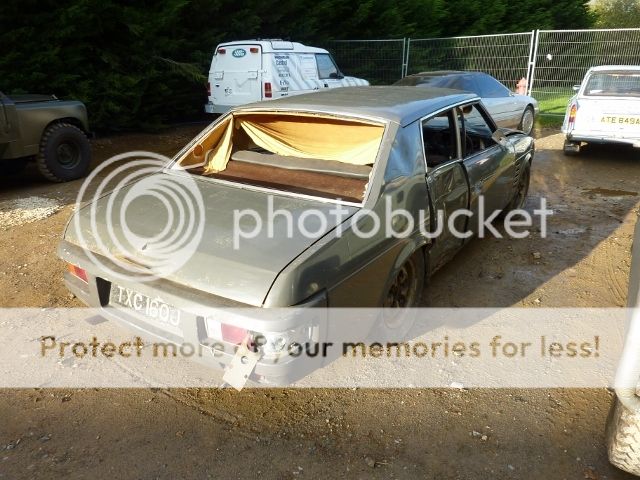rockdemon said:
Woah I thought these things didn't actually exist. That would have so much road presence!
It is the only survivor. The other five or six running cars were scrapped in 1971. The records at Heritage very sadly have wording similar to 'Cars scrapped, log books destroyed July 1971' against them.
Jaguar 1 - Rover nil.
P8 is a fascinating subject. The car was close to production when cancelled - IIRC launch was actually scheduled for Autumn 1971.
I'd love to have driven one - I know of some cine film shot at MIRA which shows it flying round the banking with P6's chase cars having real problems staying with it..
The Wiki entry is generally on the money, but I think has the dates wrong slightly as I remember the cancellation stuff being 1971:
"The company's other major project at this time was the P8, a successor, styled by David Bache, for the 3-litre.
The car's shape owed much to Detroit, with a front bumper concealed under a "bumperless" poyurethene nose, in a manner reminiscent of contemporary Pontiacs, and a side profile reminiscent of a slightly chunkier Opel Rekord. Although the original brief was for the car to be no longer externally than a Rover 2000, management changes led the project to be redefined as it progressed, and the P8 scheduled for launch at the 1971 London Motor Show was substantially larger than any existing Rover sedan, with the Rover V8 engine expanded for this application to 4.4 litres. The car followed the P6 in employing a steel frame structure with bolt-on steel or aluminium panels. The manufacturer was nevertheless short of cash and of focus at this time: the P8 was one of several new model projects subjected to a slipping time-line.
By the revised launch date towards the end of 1972 the considerable development costs had been expended and pre-production prototypes had even undergone extensive testing in Finland. Production capacity had been set aside for the P8 at the Solihull plant. However, an expenditure review in 1970 found the project subjected to criticism from Sir William Lyons, by now an influential member of the British Leyland board: speculation has arisen that Lyons saw the car as a threat to future investment in the recently launched Jaguar XJ6.
It later emerged that Rover's contender would not have been particularly cheap or easy to build, and the shrinkage of the European market for sedans of this size that followed the 1973 oil price shock suggest that abandonment of the project in 1972 - even at the eleventh hour - may have been the right decision for British Leyland; but the P8 was not entirely ummourned nearly thirty years later. Some of the P8's styling cues turned up two years later on the Leyland P76, and the driver's view of the instrument panel (albeit without the Austin Allegro style "quartic" steering wheel that appears in one of the surviving pictures of it) would have been not entirely unfamiliar to the driver of a 1976 Rover 3500."
Some more relevant P8 stuff here:
http://www.aronline.co.uk/blogs/2011/08 ... -solihull/






